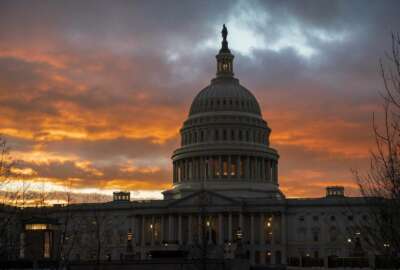
Uh, about that pay cut column …
Monday’s column got the attention of a lot of readers, especially those at the top step of the top grade — GS-15. Unfortunately, says Mike Causey, the...
Monday’s column got the attention of a lot of readers, especially those at the top step of the top grade — GS-15.
That’s the good news. Hits are always welcome.
The not-so-good-news is that the way I explained the situation was mostly wrong. Fortunately those of you at the top pointed that out. Not so fortunate for me and my walk of shame.
What I said was that because of the cap on pay for career civil servants, those workers cannot be paid more than persons in Executive Level 4 positions. Those top jobs include assistant secretaries, general counsels, inspectors general etc. The people who, in many instances, actually run or pilot the department or agency.
That was okay.
What I said that wasn’t okay, which is sort of important, is that because of the pay relationship between GS-15, step 10 and the ES 4 salary level many top career employees either wouldn’t get any raise or, once they hit the new 2020 pay cap, they would get only a token increase. Under that scenario many top career people would see their take-home pay decrease next year because they, like other feds and retirees, are going to be hit with higher health premiums. But it’s not likely for many, and not as serious for others, as I made out.
That’s the good and bad news about having thousands of editors who understand the subject better than the writer — in this case, me. So here are two versions from readers who are directly affected by the often confusing federal pay structure:
1. “I wanted to let you know that Monday’s column, ‘Top feds face 2020 take home pay cut’ is not correct. The cap for the General Schedule, as well as many alternative pay systems, is Level 4 of the Executive Schedule. That schedule is always adjusted along with the General Increase. You can find the current and previous Executive Schedules on the OPM website. The only time it was frozen was in 2011-2013 when there was an overall pay freeze (no General Increase). It does not increase with locality pay so most years, uncapped feds get a higher raise than people at the cap. For example, the cap was $164,200 in 2018 and it is $166,500 in 2019. If there is a 2.6% General Increase, regardless of whether there is also a locality increase, in 2020 the cap, and hence the pay of people at the top of the GS schedule, will increase to $170,800. You may want to correct the column. Otherwise, many of your readers may be unnecessarily depressed by it.” — B.B.
2. “Mike, you need to be a little more careful here. The top GS (GS-15, step 10) pay has increased for the last several years. The pay cap (“limited to the rate for level IV of the Executive Schedule”) has been moving at a slower rate than other pay levels. You can confirm previous pay rates at OPM’s website. For example, in the Washington, D.C.-Baltimore region:
- 2014: $157,100
- 2015 : $158,700 (1.02% increase)
- 2016: $160,300 (1.00% increase)
- 2017: $161,900 (1.00% increase)
- 2018: $164,200 (1.42% increase)
- 2019: $166,500 (1.40% increase)
“Love your column and have been reading since your WaPo days.” — Navy Engineer
Nearly Useless Factoid
by Amelia Brust
The largest rat-free populated area in the world is the province of Alberta, Canada. The region is about 250,000 square miles, a range of climates and for about 70 years has had a vigilant, organized public campaign for rodent control. In 1954 the government widely issued a booklet, “Rat Control in Alberta,” warning residents that anyone who failed to stop the Norway rat faced destroyed crops, ruined pantries and even the bubonic plague. Pet rats are illegal, and the Agricultural Pests Act made it an offence for property owners not to immediately eradicate every rat they encountered. Public meetings on identification and extermination techniques for citizens, propaganda posters and a designated Rat Control Zone were utilized. Today, the province has no breeding rats but rat control makes sure it dies quickly and childless. Whenever rats appear in Alberta, it garners blanket news coverage for days on end.
Source: National Post
Copyright © 2025 Federal News Network. All rights reserved. This website is not intended for users located within the European Economic Area.
Mike Causey is senior correspondent for Federal News Network and writes his daily Federal Report column on federal employees’ pay, benefits and retirement.
Follow @mcauseyWFED





